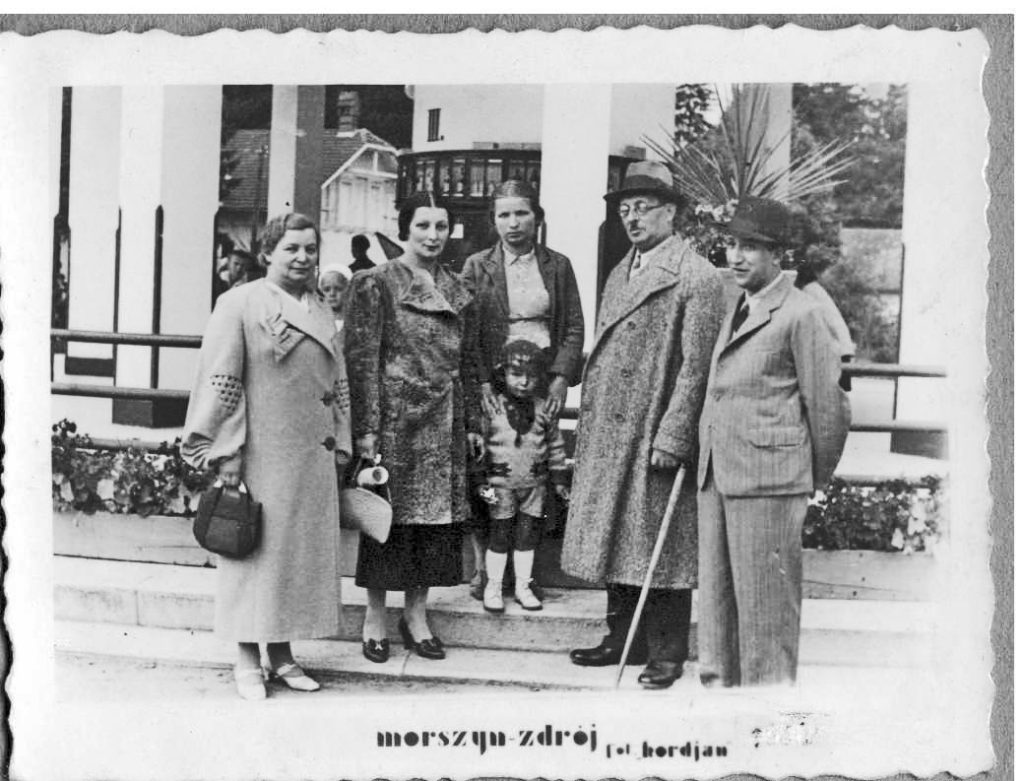
George Zimmerman was six years old when the war began and the German army occupied Poland. He was born in October 20, 1933 as Jerzy “Jurek” Jakub Ogurek in the town of Katowice, in the same region as Będzin. At the outbreak of the Second World War, his family moved briefly to Kielce. His father Alexander Ogurek considered joining the Polish army but before he had a chance to do so, Poland had already been overrun by Germany. Soon after, the Ogurek family returned to Będzin, now already under German occupation. They were able to stay in their apartment on 2 Malochowska Street, though Germans took their furniture away and parts of the apartment was used as German offices.
Sometime in 1941 the family was forced to move to a smaller apartment next to a slaughterhouse. George remembers the unpleasant screams of animals. Movement was restricted, and everyone had to wear the blue armbands in public to identify them as Jews. Despite the hardships, George remembers moments of normal childhood life, playing in the courtyard with other Jewish children, getting interested in girls, and secretly smoking a cigarette.
In 1942 the family was moved yet again, this time being marched into the Kamionka ghetto, with some Polish townspeople on the side of the road jeering at the sight of the resettling Jewish population in horse carts. In Kamionka, the family got a small cottage together with other families, with a small garden plot where George planted sunflowers and potatoes. George also remembers seeing Jewish Ghetto Police and his parents talking about the Jewish Council, especially Moshe Merin and the bribes one had to pay for any small favor.

In August of 1943, the Germans moved into the Kamionka ghetto to liquidate it. His family with 40 other people hid in the attic behind a false door for about a week. They were discovered and sent to a holding camp located in a shoe factory, with about 1,000 people and two outhouses. Many of the people suffered of diarrhea. Previously the factory was run by a German civilian (Treuhander) named Mr. Braune, who tried to protect his Jewish labor force. George’s father managed to procure Paraguayan passports for the family. They escaped, got to the Slovak border, and stayed in hiding in Žilina with a Jewish family. With the help of the underground network they made their way across the Slovak-Hungarian border to Budapest. Moving from place to place, they were eventually caught by the Germans and transported to the Sered labor camp in Slovakia. A German guard in Będzin, named Neugebauer, was reassigned to Sered, where the family under the name of Bruk was held as a “mischling family.” Neugebauer recognized them and they were deported in a cattle car to Auschwitz-Birkenau in November 1944. George arrived there four days after the discontinuation of the gas chambers.
In January of 1945, George met his uncle in a Birkenau barrack for prisoners with infectious diseases. His mother and grandmother were transported to a labor camp in the German Reich and survived. His father and grandfather died during the death march. George and his uncle were liberated by the Soviet Army. While his uncle was imprisoned after the war for one year as a “collaborator,” George was placed into Polish foster families and then moved to a “Shomer Hatzair” Zionist orphanage in Budapest. He was reunited with his mother at the end of 1945. He and his mother stayed in a Displaced Person camp and then in a town near Stuttgart in West Germany until they were able to immigrate to New Haven in the United States in 1950. George attended Yale University on a City of New Haven Scholarship and eventually became a Professor of Physics at Boston University.